
Juste une dédicace pour Philippe et ses nuits agitées !
La tête dans l'aqueux.
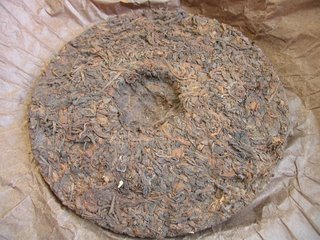


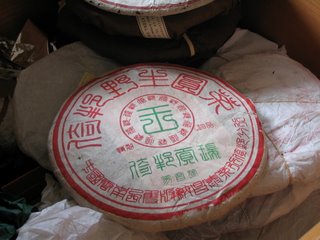




Differentiating Zhu Ni From Red Clay
For the untrained eyes, it is extremely difficult or even impossible to tell apart a zhu ni teapot from a red clay teapot. Zhu ni clay has properties or characteristics that are distinctively different from red clay and can only be apparent after the pot has been used for some time. No one is going to let you use a zhu ni teapot for 6 months to confirm that it is indeed of zhu ni clay before paying up.Therefore I have listed below some pointers which you would give you some idea what to look for:
• zhu ni clay is extremely pure and does not contain any impurities because the water method was used to segmentate the layer of finest quality zhu ni from the raw red clay. You will notice that the zhu ni clay is homogenous with little or no foreign particles. It also exhibit have that "wet look" and silky feel. Zhu ni teapots may share the same characteristics despite being few centuries apart in age, but its surface properties maybe different. Pre-1850s zhu ni clay teapots usually have large particles size but those between 1850s to 1940s are extremely fine and under hotwater, the reflections of the surface of the pot is exactly like that of butter.
• Due to the tools used, zhu ni pots tend to have "crawl marks" on its surface. It can be seen when light is reflected off the surface at an angle, but you cannot feel it with your finger. Although such marks are also present in zisha teapots, it is more commonly seen in zhu ni teapots before 1960s.
• All zhu ni teapots are small in size because zhu ni itself does not have strong bonding strength as zisha. If you come across zhu ni teapots that are large in size, then you can be sure that some zisha clay has been added to "borrow" its strength.
The above points only served as a guide and if you think that just based on the above, it would be easy to recognise a zhu ni teapot then you couldn't be further from the truth. It take me 3 solid days to discover what constitue "crawl marks" on my zhu ni pots. To make matter worse, not all zhu ni teapots exhibit these telltale signs.
To a tea connoisseur, zhu ni teapots are a definite bonus because the extremely fine and pure clay has resulted in lower air cavities compared to zisha. This means that zhu ni has less ability to maintain the heat which in turns allow the fragrance of the tea to be more easily released. The result? A more fragrant tea!
 Une belle couleur cuivrée, brillante, un nez frais et « sombre » en même temps, pas de note fumée : ça s’annonce bien !
Une belle couleur cuivrée, brillante, un nez frais et « sombre » en même temps, pas de note fumée : ça s’annonce bien !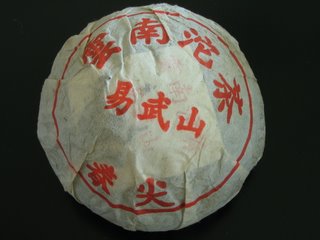
Famous Tea Mountains in Yunnan
How many tea mountains are there in Yunnan? A lot! Many Pu-erh drinkers have heard of “Six Tea Mountains”. Then there are famous tea mountains like Nan Nuo, Jing Mai. How do these tea mountains relate to “Six Tea Mountains”?
Historically, there are six tea mountains: You Le, Ge Deng, Yi Bang, Mang Zhi, Man Zhuan, and Man Sa. You Le is located in now Jin Hong City. Gen Deng, Yi Bang, Mang Zhi, and Man Zhuan are located in now Xiang Ming County. Man Sa is located in now Yi Wu County. The historical “Six Tea Mountains” are all located at north of Lan Cang River.
There are also six tea mountains south of Lan Cang River. Nan Nuo and Jing Mai are one of them. The other four mountains are: Meng Hai, Ba Da, Nan Qiao, and Meng Song. Nan Nuo, Meng Hai, Ba Da and Nan Qiao are all located in Meng Hai Town. Jing Mai is located in Hui Min County.
One tea mountain that is not on either of the “Six Tea Mountains” list is Yi Wu. Yi Wu is located beside Man Sa. Yi Wu quickly became an up-star when the historical “Six Tea Mountains” were on the wane. Pu-erh made of leaves from Yi Wu tea tree leaves is famous for its high quality after long aging.
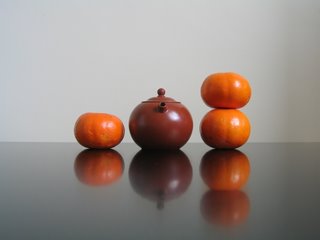

 Et cette dégustation ?
Et cette dégustation ?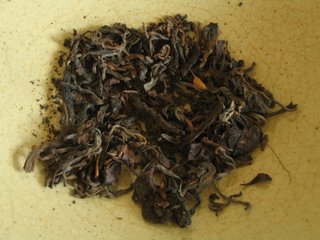

 Cette première galette est en faite une de mes dernières acquisitions. Elle date de 1998 et porte la réference "31" à la Maison de trois thés. Stéphane Erler, blogger de "Teamasters", a eu la gentillesse de me traduire les idéogrammes qui figurent sur l'emballage, je lui laisse la parole :
Cette première galette est en faite une de mes dernières acquisitions. Elle date de 1998 et porte la réference "31" à la Maison de trois thés. Stéphane Erler, blogger de "Teamasters", a eu la gentillesse de me traduire les idéogrammes qui figurent sur l'emballage, je lui laisse la parole :
